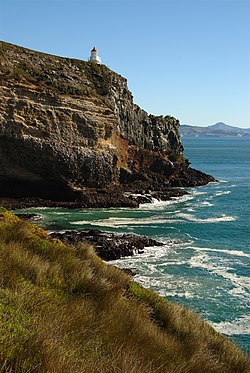
Taiaroa Head is a headland at the end of the Otago Peninsula in New Zealand, overlooking the mouth of the Otago Harbour. It lies within the city limits of Dunedin. The nearest settlement, Otakou, lies three kilometres to the south.
Contents
The cape is home to a lighthouse, built in 1864, and a colony of over 100 northern royal albatrosses, which established itself in 1919 [1] – the only such colony on an inhabited mainland. There is also the Royal Albatross Centre.


